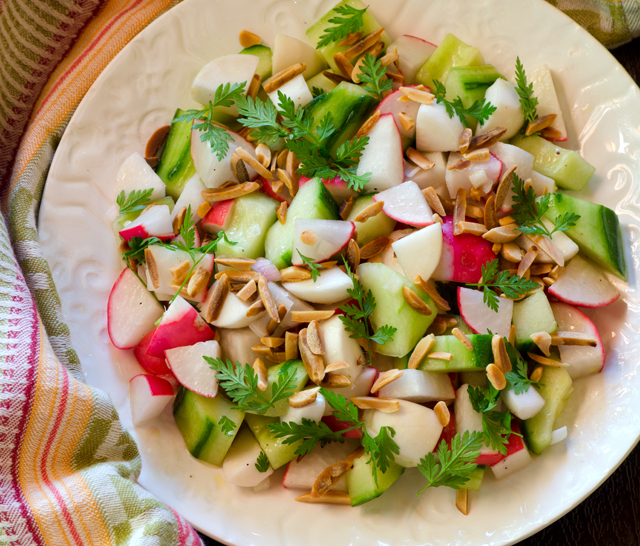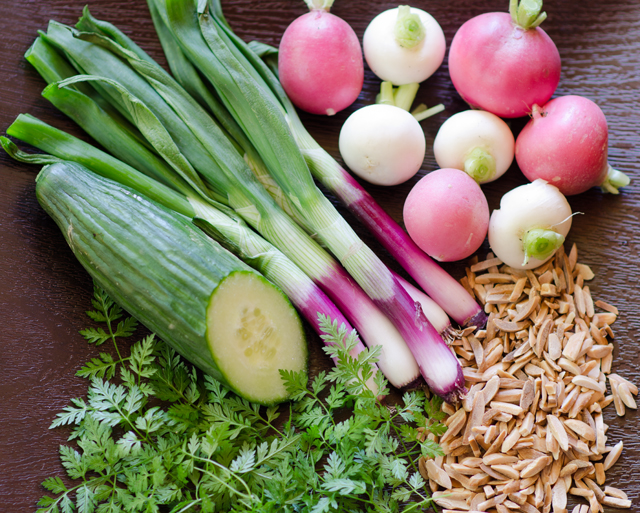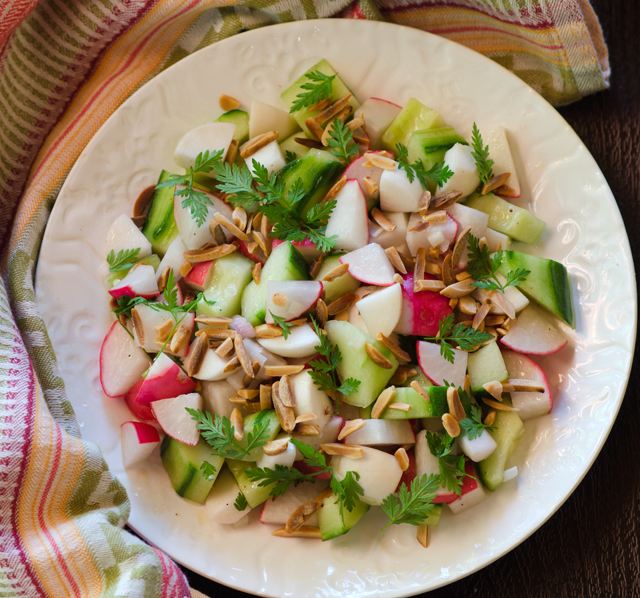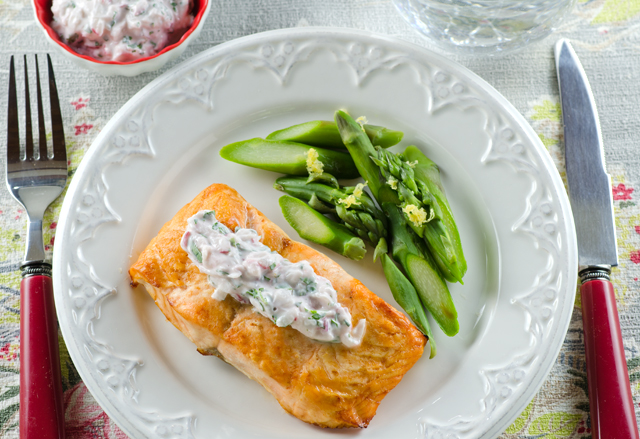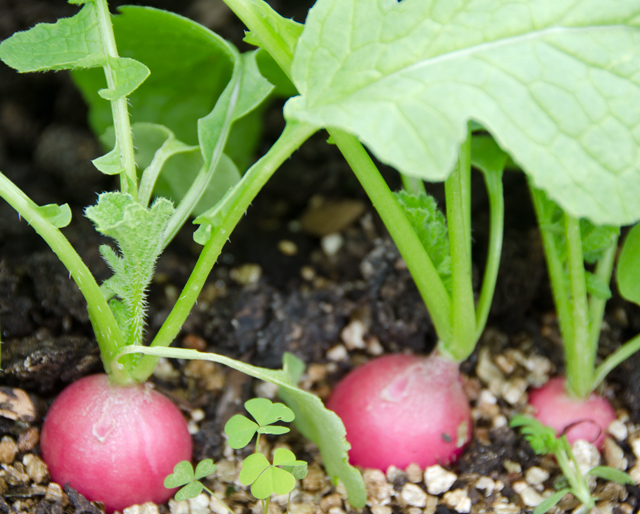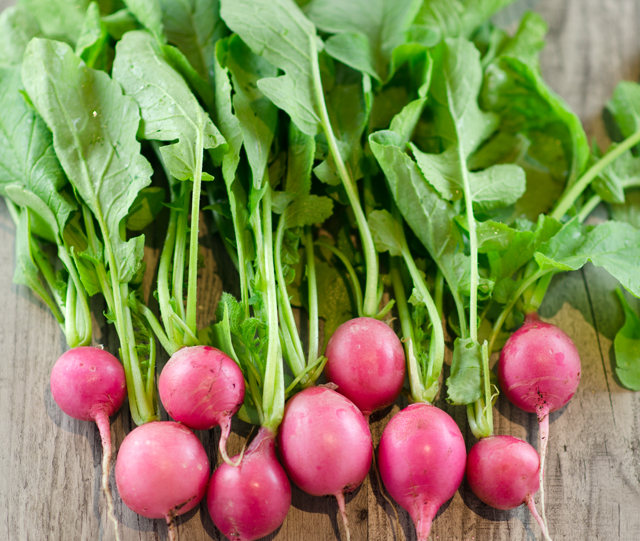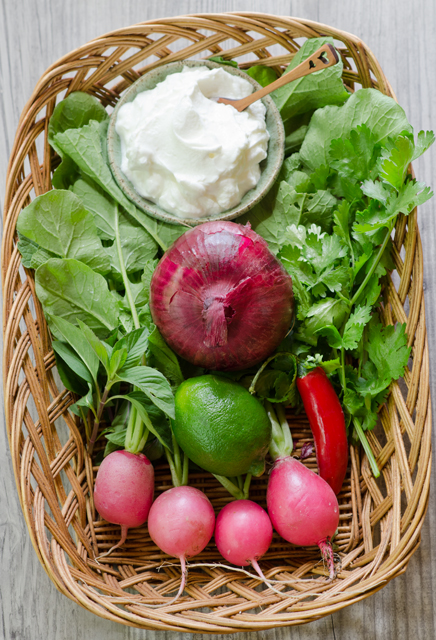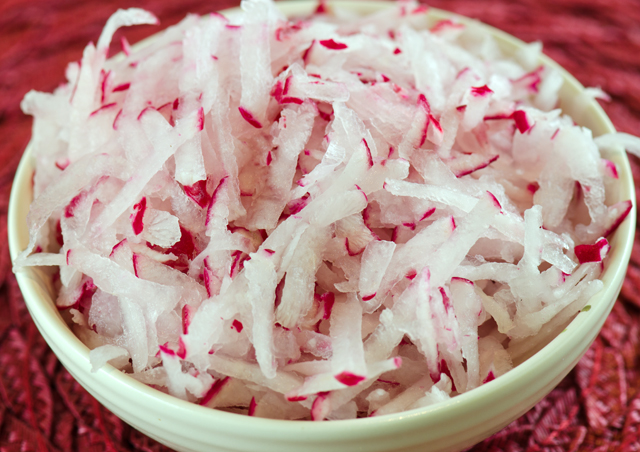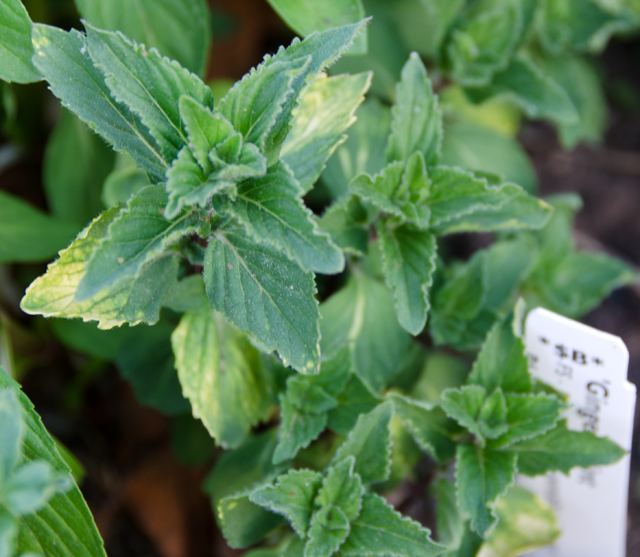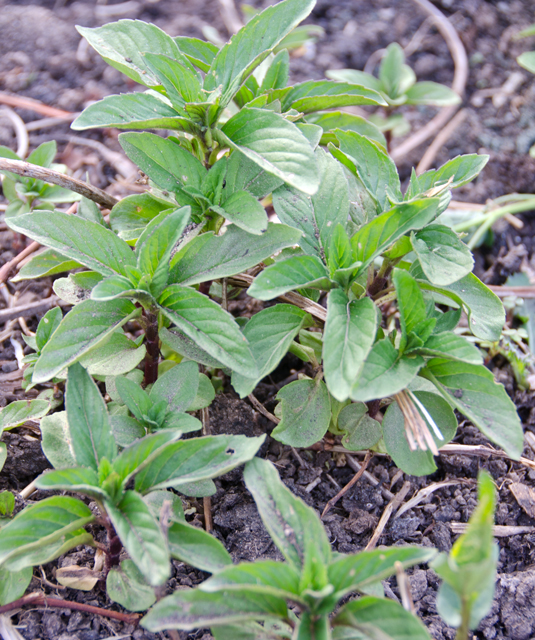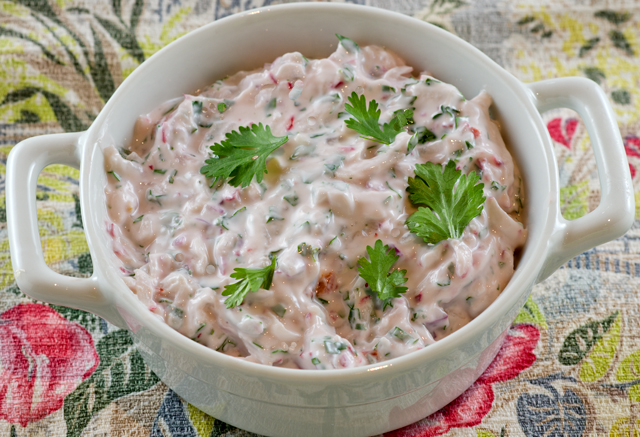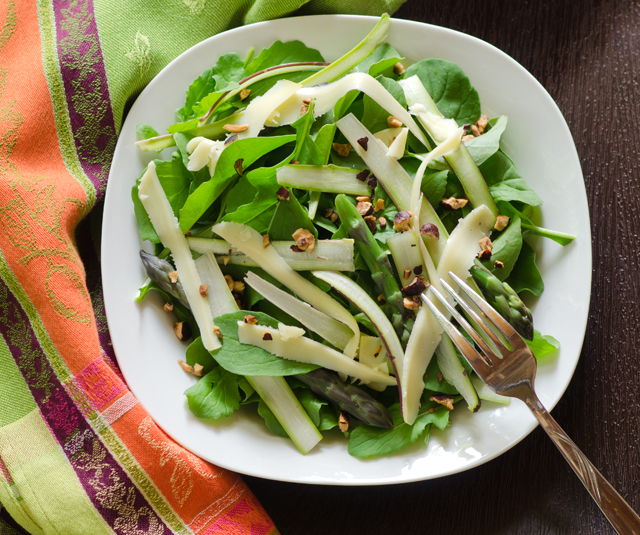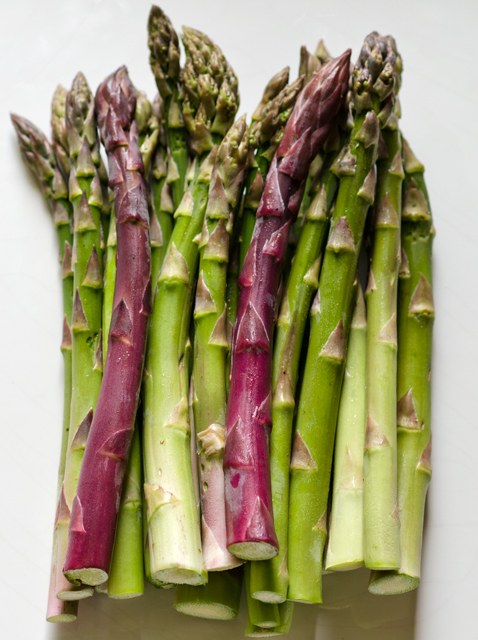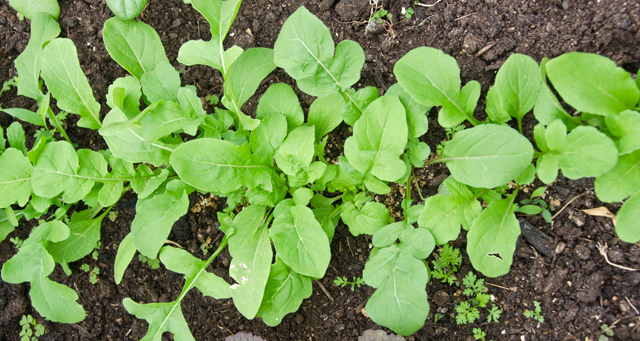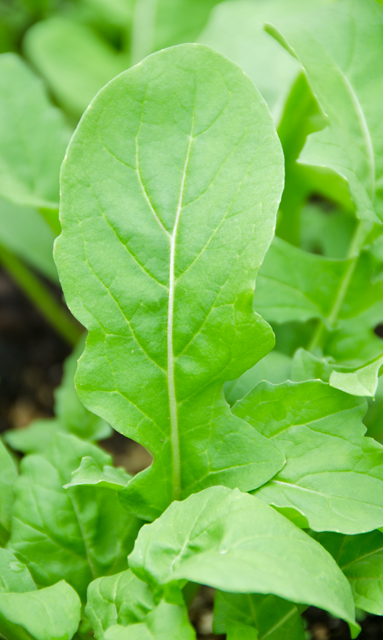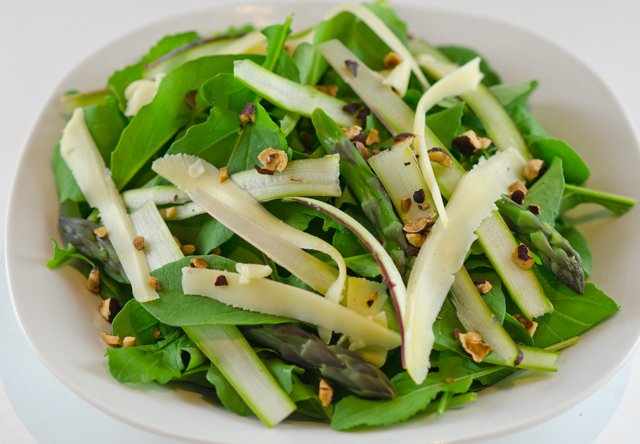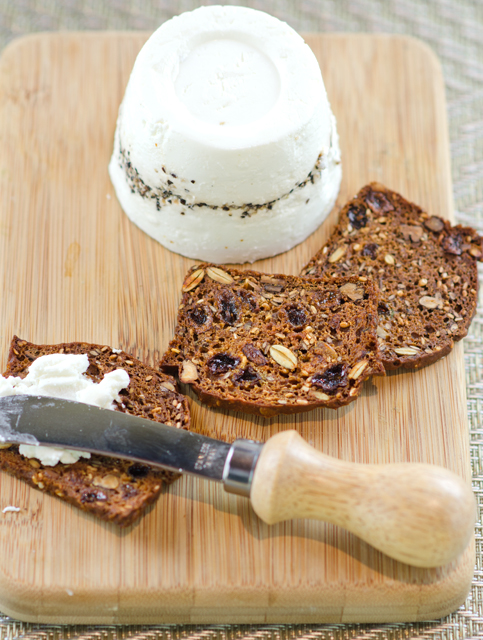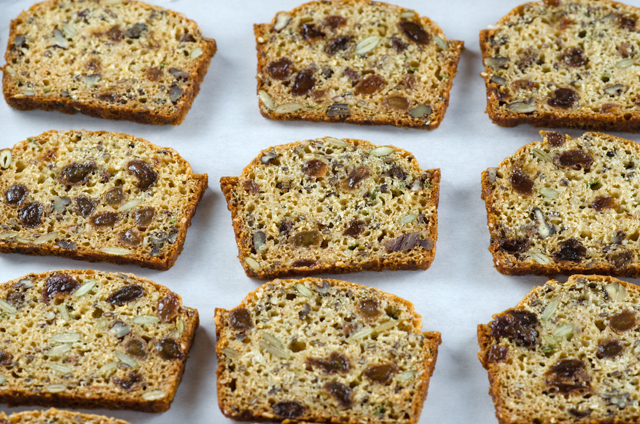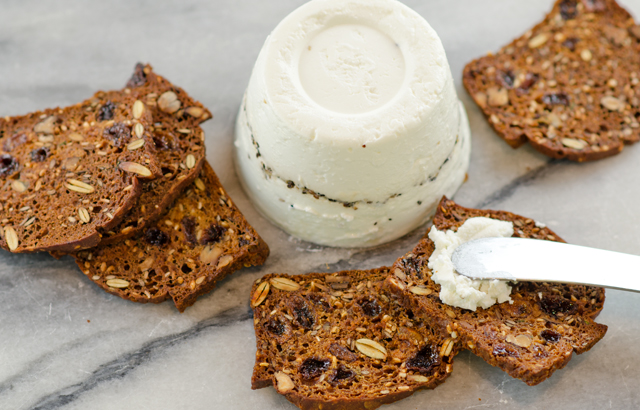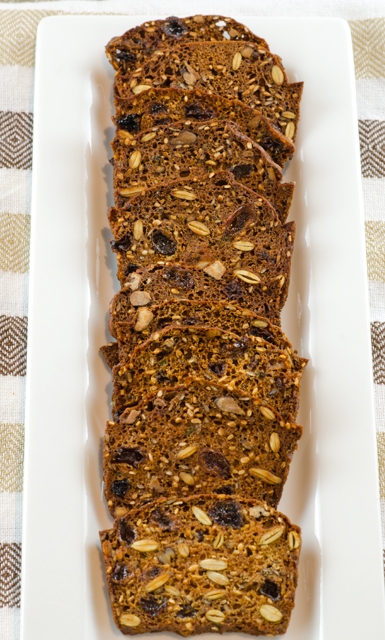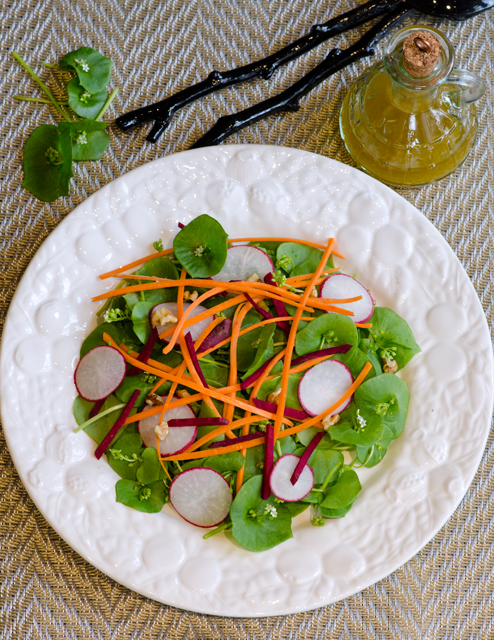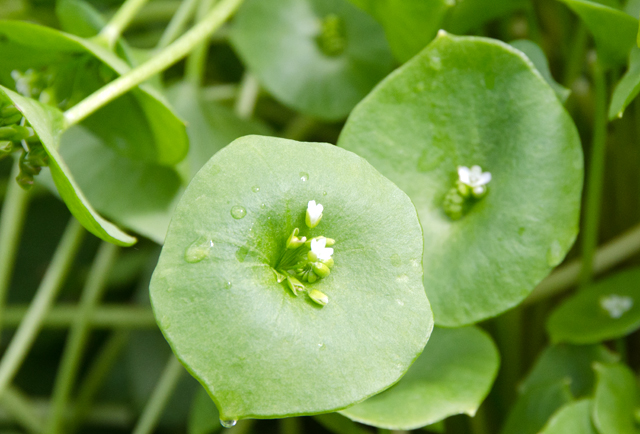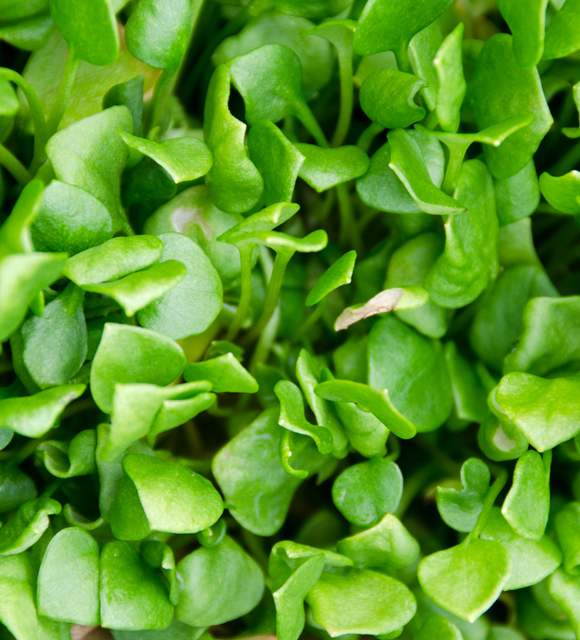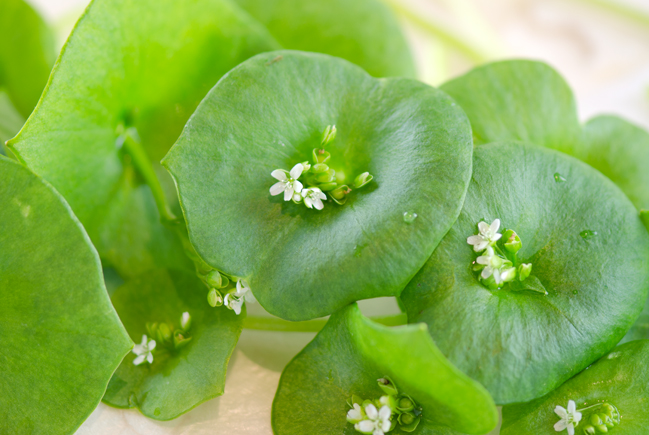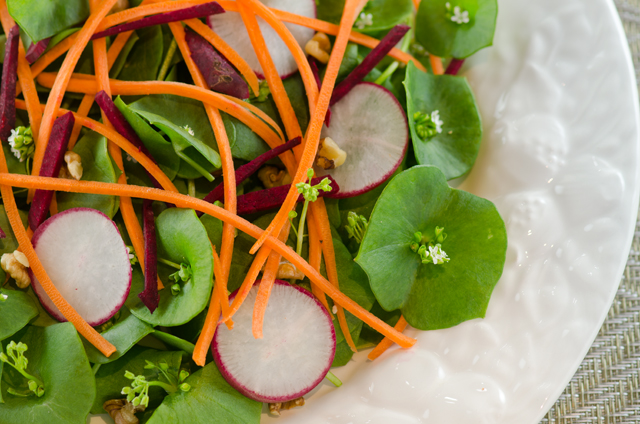Cucumbers and radishes will never co-exist in our garden. Radishes need the cooler temperatures of spring while cucumbers didn’t make an appearance in our garden last year until August. This salad, loosely adapted from one in Bon Appetit, also utilizes another spring offering, sweet mild Hakurei turnips. Hakurei turnips are harvested at about the same size as a radish. They are pure white and their flavor lends nicely to salads.
In this salad, small chunks of cucumber, radish and turnip are combined with toasted almond slivers and tossed with a vinaigrette.
I made a vinaigrette accented with spring’s most etherial and delicate herb, chervil. A cousin to parsley, it’s leaves look like delicate lacy ferns. Our chervil was originally planted in the garden but a new larger healthy patch has seeded itself in the back of the house, nowhere close to it’s orginal location. It is a plant that also prefers cooler temperatures and partial shade. The flavor is subtle, mildly anise with just a touch of parsley. Because of it’s delicate nature, it’s rare that you would find chervil in any market, farmers or otherwise. However it is easy to grow and fortunately often seeds itself.
Toasted almonds lend a nice crunch to this dish. Rather than the oven you could alternately toast these in a dry skillet on the stove top. Whatever choice you make, watch nuts carefully, one minute they’re a pale tan, the next they are too dark. Toss the nuts occasionally, and as soon as they turn uniformly golden in color, remove from the baking sheet because they will continue to cook and darken in the pan.
I cut all the vegetables into small uniform chunks, slicing all of them would make for a different texture and would make an interesting salad as well. I like a touch of sweetness in most of my vinaigrettes, I used honey from a new vendor at my local farmers market in Wrightstown. Truly Pure and Natural carries a whole line of natural products, including local honey. They have an entire line of delicious flavored honeys, everything from lavender, to coffee to one they call “hottie honey”. I availed myself to quite a few “tastings” and came home with a three pack. I added just a touch of the hibiscus honey to my vinaigrette. I’m sure I will be back for more!
As with many salads, this one needs to be assembled right before serving. If you don’t have chervil, flat leaved parsley can substitute.
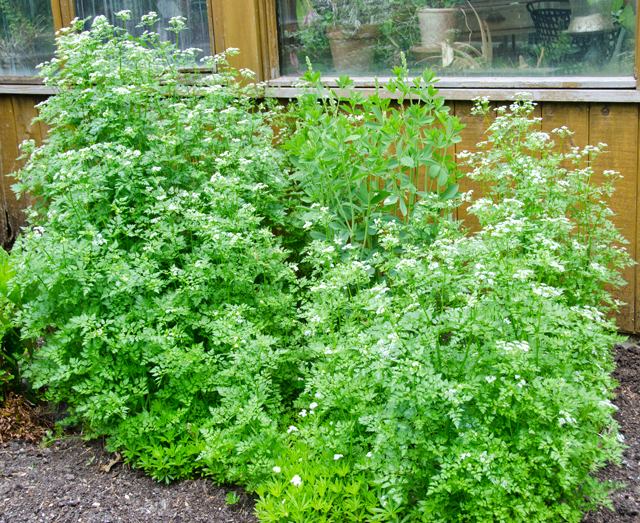
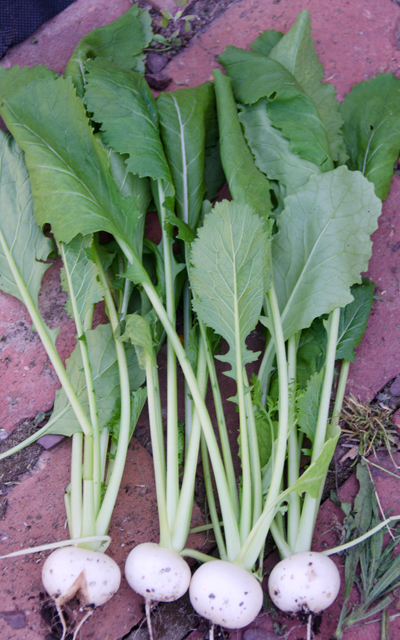
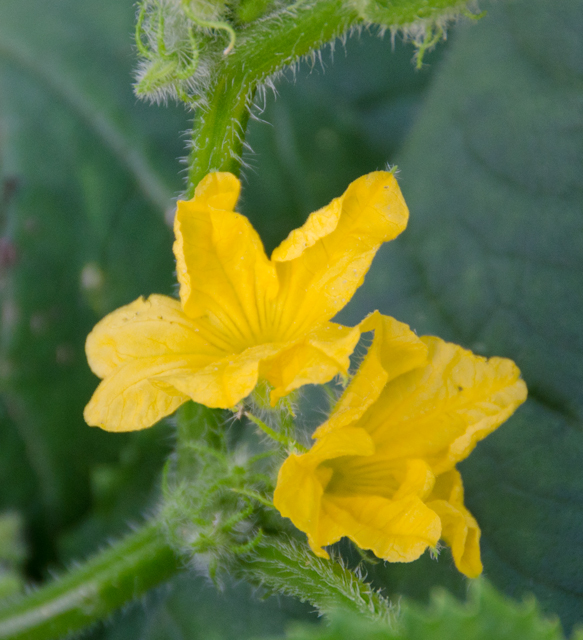
Cucumber, Radish and Turnip Salad
Makes four servings
Ingredients
- 1/2c slivered almonds
- 1 or 2 spring onions, finely chopped
- 1/4c raspberry champagne vinegar or your vinegar of choice
- 1t honey (I used Hibiscus infused honey)
- 1/4c extra virgin olive oil (more to taste)
- Kosher salt and freshly ground pepper
- 1c English hothouse cucumber chunks, peeled, seeded and cut into ½inch chunks
- 1c radishes, trimmed and cut into ½inch chunks
- 1c Hakurei turnips, trimmed and cut into ½inch chunks
- 1c chervil leaves and more for garnishing the salad
Directions
- Preheat oven to 350°F. Spread almonds out evenly on a rimmed baking sheet. Toast, tossing occasionally, until golden brown, 8 to 10 minutes; let cool.
- Whisk onion, vinegar, honey and olive oil in a large bowl; season with salt and pepper. Add cucumbers, radishes and turnips, chervil and almonds; toss to coat.
- Season to taste with salt and pepper.
